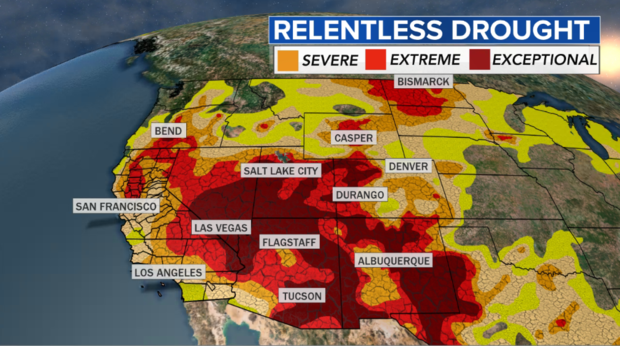Source: CBS News
By Josh Daniels
In 2000, Western U.S. entered the second worst megadrought in 1200 years. A combination of the natural dry-cycle and human driven climate change has left 60% of the region in severe drought conditions, and it is only expected to get worse. The U.S. is headed towards the most extreme stretch of the megadrought since it began.
La Nina, the cold event, typically brings an abundant amount of water to the surface of Western America. This year it failed to do so. Because of this, the wet season in the West brought less than 50% of the water it typically brings and left the soil moisture content at its lowest in 120 years. Additionally, the monsoon season did not come this year and the region had the worst fire season in modern times. All of these conditions together have led to the terrifying road the West is heading down this summer.
Lake Meade and Lake Powell, two water bodies on Arizona’s state line, will not be able to supply the high demand of water from the increasing population in the West. Lake Powell is expected to be at 45% of its typical amount, and Lake Meade is even lower at 40%. Both lakes rely on melting snow for water supply, and as the snowpack continues to decline and population increases in the region, worsening conditions are inevitable for years to come.
The US has already spent over 366 billion dollars on droughts and wildfires throughout the last 40 years. The upcoming period will only help those numbers climb. Sadly, the only way to prevent drought from getting worse in the future is by stopping climate change in its tracks. Accelerated global warming will only make droughts worse in future years and continue to cause issues on a national scale for our country.

